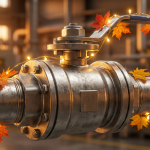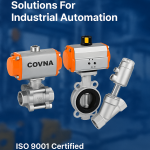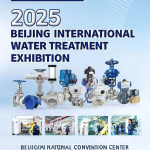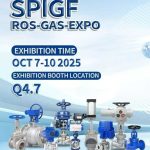Knowledge About Valves
Recent Posts
-
 Why Is My Ball Valve Leaking and How to Fix It Before Thanksgiving?2025-12-23/0 Comments
Why Is My Ball Valve Leaking and How to Fix It Before Thanksgiving?2025-12-23/0 Comments -

-

-

-

Electric float valves are critical for controlling the liquid levels in storage tanks, agriculture systems, and even in wastewater treatment plants. COVNA model’s construction is sturdy and paired with an intelligent sensor which can adjust in realtime to prevent overflow or shortage. Their counterparts of 3 way electric ball valves also improve system efficiency by dynamically directing flow based on sensor feedback on demand.
Electric float valves by COVNA are designed for extreme conditions with robust sealed corrosion resistant body and low maintenance features. Integration with a 3way electric ball valve achieves full automation which retracts the need for manual intervention in critical processes like fire suppression and industrial cooling. Motors incorporated are energy efficient with modular design allowing seamless integration to current infrastructure.
Remote monitoring and adaptive calibration showcase COVNA innovation the most on the electric float valve. COVNA is known to provide optimal solutions for industries that focus on operational sustainability and safety. Mixing precise hydraulic control with electric responsiveness to redefine reliability in liquid control systems globally is a trademark move by COVNA.
The fluid control valve actuator is essential for modern automation, supporting control of fluid movement for pipelines, HVAC, and other industrial workflows. COVNA's electric actuators feature rugged construction and intelligent management, incorporating IoT as a backbone. These devices transform electrical signals into mechanical movement, providing unrivaled precision and dependability, even under severe pressure.
For hybrid solutions, the electric hydraulic splitter valve offers diverse flow control by combining hydraulic forces with electric adaptability. COVNA’s ball valve actuator electric possesses overload protection and components made from corrosion-prone materials, ideal for water treatment, oil refining and chemical plants. Its energy-efficient design also helps mitigate sustainment costs while enhancing operational efficiency.
With a global focus on automation, comes a focus on the development of electric hydraulic splitter valves, and ball valve actuators. Innovations like real-time diagnostics and modular architectures mark unparalleled standards for the industry.
The 2W21 Direct Lifting Diaphragm 12V Solenoid Valve is a high-performance valve designed for low-pressure systems, offering durability, efficiency, and zero leakage. With its robust construction and advanced sealing technology, this valve ensures reliable operation in various industrial and commercial applications.
Key Features
Durable Valve Body for Low-Pressure Systems
The 2W21 solenoid valve is engineered with a harder valve body, making it ideal for low-pressure environments (0-1.0 MPa / 10 bar). Available in brass and stainless steel, it provides excellent corrosion resistance and long-term reliability.
- Imported Sealing Material – Zero Leakage
Equipped with high-quality imported sealing materials, this valve guarantees zero leakage, ensuring system integrity and preventing fluid loss. This feature is crucial for applications requiring precise fluid control.
- Low Power Consumption & Energy Efficiency
The 2W21 solenoid valve operates at 12V DC, consuming minimal power while maintaining optimal performance. Its energy-efficient design helps reduce operational costs without compromising functionality.
- Advanced Coil Technology – No Overheating
Thanks to innovative flying lead coil technology and high-frequency design, the valve remains cool even during prolonged use. This eliminates the risk of overheating and extends the valve’s lifespan.
- Stable Performance with Low Temperature Variation
The solenoid valve exhibits minimal temperature fluctuations, ensuring consistent performance in varying operating conditions. This makes it suitable for applications requiring stable and precise fluid control.
Technical Specifications
- Model: 2W21
- Size Range: 1/2” to 2”
- Pressure Range: 0-1.0 MPa (10 bar)
- Material Options: Brass, Stainless Steel
- Voltage: 12V DC
- Sealing: Zero leakage (imported sealing material)
Applications
The 2W21 solenoid valve is widely used in:
- Water treatment systems
- Irrigation systems
- Industrial automation
- Medical equipment
- Low-pressure hydraulic and pneumatic systems
With its robust construction, energy efficiency, and leak-proof design, the 2W21 Direct Lifting Diaphragm 12V Solenoid Valve is an excellent choice for low-pressure systems requiring reliable and long-lasting performance. Whether for industrial or commercial use, this valve delivers precision, durability, and efficiency in every application.
For more details on specifications and customization options, feel free to contact us!
In industrial production and pressure vessel systems, safety valves, as key overpressure protection devices, undertake the important mission of preventing equipment explosions, ensuring personnel safety and maintaining stable system operation. Whether it is petrochemical, electric power, or pharmaceutical and food processing industries, safety valves are an indispensable link in the equipment safety chain. This article will explore in depth the working principle, classification, application scenarios and selection points of safety valves to help users better understand this key equipment.
1. Working principle of safety valves
The core function of safety valves is to control system pressure by automatically releasing media (such as gas, liquid or steam). When the internal pressure of the equipment exceeds the preset set pressure, the valve flap opens under the action of pressure and quickly releases excess pressure; when the pressure returns to normal, the valve flap closes again to ensure the continuous operation of the system. This process relies on precise spring force or lever counterweight design, which reflects the "active protection" characteristics of safety valves.
2. Main classification of safety valves
According to the structure and working principle, safety valves can be divided into the following categories:
Spring-type safety valve: uses spring force to balance the medium pressure, has a compact structure, and is suitable for a variety of industrial scenarios.
Lever safety valve: The opening pressure is adjusted by lever and hammer, and it is often used in low-pressure and high-flow systems.
Pilot safety valve: The pilot valve is used to control the action of the main valve, with high precision, and is suitable for high-pressure and high-parameter working conditions.
In addition, it can be subdivided into steam safety valves, gas safety valves and liquid safety valves according to the type of media. Users need to choose the appropriate model according to actual needs.
Key application areas of safety valves
Petrochemical industry: Protect reactors, storage tanks and pipeline systems from overpressure risks.
Power industry: Used for overpressure protection of equipment such as boilers and steam turbines.
Pharmaceutical and food processing: Ensure the safe operation of clean pressure vessels.
New energy field: Pressure control in hydrogen energy storage and transportation, and lithium battery production.
In these scenarios, the reliability and response speed of the safety valve are directly related to production safety and economic benefits.
4. Key parameters for safety valve selection
When purchasing a safety valve, you need to pay attention to the following parameters:
1. Set pressure: The preset pressure value for valve opening must meet the equipment design standards.
2. Discharge capacity: The medium flow rate that can be released per unit time must match the maximum overpressure condition of the system.
3. Medium characteristics: Factors such as corrosiveness, temperature, phase state (gas/liquid) affect material selection (such as stainless steel, alloy steel).
4. Certification standards: Comply with international or industry standards such as ASME, API, GB/T to ensure compliance.
5. Maintenance and inspection of safety valves
Regular maintenance is the key to ensuring the long-term stable operation of safety valves:
Online inspection: Use acoustic detection technology or pressure sensors to monitor the valve status.
Offline calibration: Disassemble and inspect at least once a year to calibrate parameters such as spring force and sealing.
Fault warning: Pay attention to problems such as valve leakage, rust or start-up delay, and replace accessories in time.
As the "last line of defense" for industrial safety, the selection, installation and maintenance of safety valves must strictly follow technical specifications. With the development of intelligent technology, intelligent safety valves with remote monitoring and self-diagnosis functions are gradually becoming an industry trend. Whether it is traditional industrial upgrading or emerging field applications, the innovation of safety valves will continue to escort global industrial safety.
The core function of safety valves is to control system pressure by automatically releasing media (such as gas, liquid or steam). When the internal pressure of the equipment exceeds the preset set pressure, the valve flap opens under the action of pressure and quickly releases excess pressure; when the pressure returns to normal, the valve flap closes again to ensure the continuous operation of the system. This process relies on precise spring force or lever counterweight design, which reflects the "active protection" characteristics of safety valves.
According to the structure and working principle, safety valves can be divided into the following categories:
Spring-type safety valve: uses spring force to balance the medium pressure, has a compact structure, and is suitable for a variety of industrial scenarios.
Lever safety valve: The opening pressure is adjusted by lever and hammer, and it is often used in low-pressure and high-flow systems.
Pilot safety valve: The pilot valve is used to control the action of the main valve, with high precision, and is suitable for high-pressure and high-parameter working conditions.
Petrochemical industry: Protect reactors, storage tanks and pipeline systems from overpressure risks.
Power industry: Used for overpressure protection of equipment such as boilers and steam turbines.
Pharmaceutical and food processing: Ensure the safe operation of clean pressure vessels.
New energy field: Pressure control in hydrogen energy storage and transportation, and lithium battery production.
When purchasing a safety valve, you need to pay attention to the following parameters:
1. Set pressure: The preset pressure value for valve opening must meet the equipment design standards.
2. Discharge capacity: The medium flow rate that can be released per unit time must match the maximum overpressure condition of the system.
3. Medium characteristics: Factors such as corrosiveness, temperature, phase state (gas/liquid) affect material selection (such as stainless steel, alloy steel).
4. Certification standards: Comply with international or industry standards such as ASME, API, GB/T to ensure compliance.
Regular maintenance is the key to ensuring the long-term stable operation of safety valves:
Online inspection: Use acoustic detection technology or pressure sensors to monitor the valve status.
Offline calibration: Disassemble and inspect at least once a year to calibrate parameters such as spring force and sealing.
Fault warning: Pay attention to problems such as valve leakage, rust or start-up delay, and replace accessories in time.
In industrial automation and fluid control systems, electric control valves have become indispensable for achieving precise flow regulation. Whether managing water, oil, gas, or chemicals, these valves ensure operational efficiency and safety.
Flow Control Valve Electric: Seamless Automation Integration
Electric flow control valves use advanced motorized actuators to adjust valve positions based on real-time sensor data. This eliminates manual intervention, enabling seamless integration with SCADA, PLCs, and IoT platforms. Their programmable logic ensures consistent flow rates even in dynamic conditions.
Electric Flow Control Valve: Energy Efficiency & Durability
Compared to pneumatic alternatives, electric flow control valves reduce energy waste by operating only when adjustments are needed. Built with corrosion-resistant materials like stainless steel or PTFE-coated bodies, they withstand high-pressure and high-temperature environments, minimizing maintenance costs.
Electric Hydraulic Control Valve: Powering Heavy-Duty Applications
For industries requiring robust hydraulic control (e.g., construction machinery or power plants), electric hydraulic control valves deliver unmatched precision. By converting electrical signals into hydraulic pressure adjustments, they enable smooth operation of heavy equipment while preventing leaks and pressure spikes.
Applications Across Industries
From oil refineries to wastewater treatment plants, electric control valves optimize processes in:
Oil & gas pipelines
Chemical processing
HVAC systems
Agricultural irrigation
Electric flow control valves use advanced motorized actuators to adjust valve positions based on real-time sensor data. This eliminates manual intervention, enabling seamless integration with SCADA, PLCs, and IoT platforms. Their programmable logic ensures consistent flow rates even in dynamic conditions.
Compared to pneumatic alternatives, electric flow control valves reduce energy waste by operating only when adjustments are needed. Built with corrosion-resistant materials like stainless steel or PTFE-coated bodies, they withstand high-pressure and high-temperature environments, minimizing maintenance costs.
For industries requiring robust hydraulic control (e.g., construction machinery or power plants), electric hydraulic control valves deliver unmatched precision. By converting electrical signals into hydraulic pressure adjustments, they enable smooth operation of heavy equipment while preventing leaks and pressure spikes.
From oil refineries to wastewater treatment plants, electric control valves optimize processes in:








